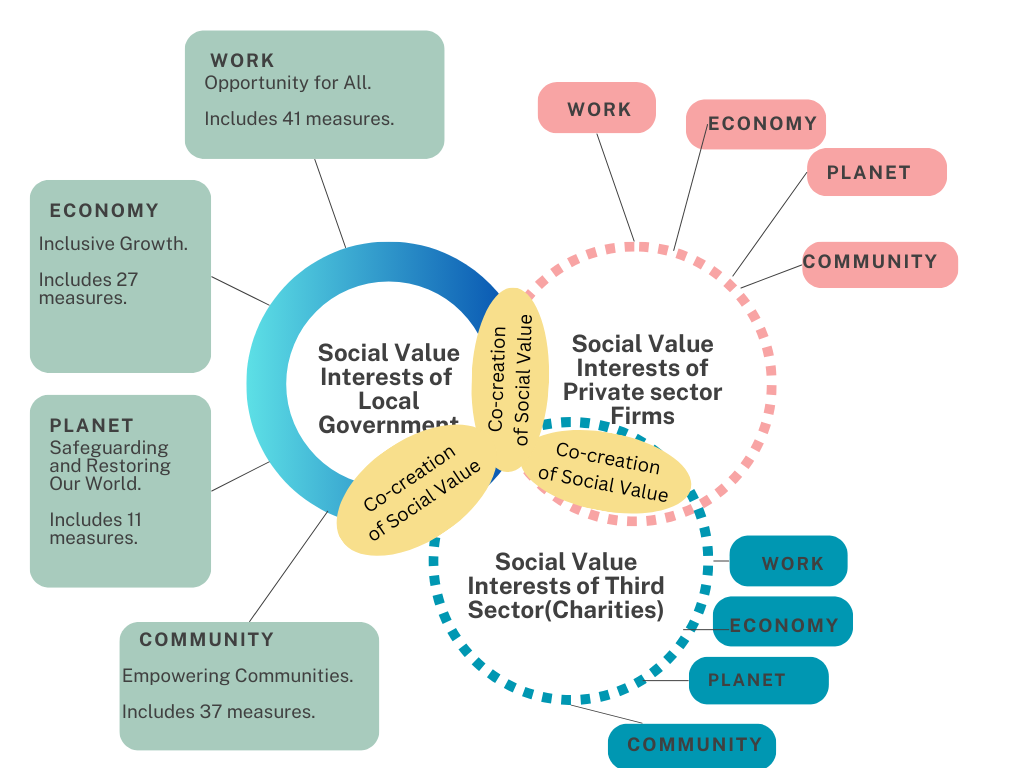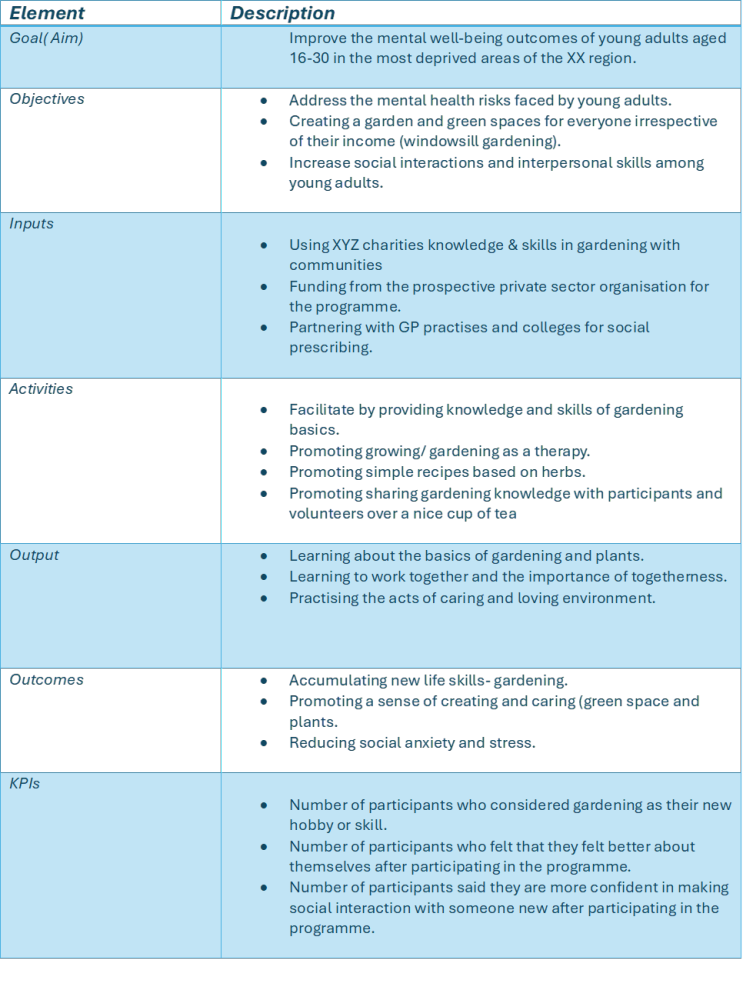
Imminent trade wars between countries and continents, poor national economic growth prospects, government spending rationalisation /cuts, and the prospect of tax increases have been recurrent themes in recent days.
Consequences will lead to price hikes and supply chain pressures, resulting in surging inflation, lower investments, and a stagnant economy, feeling the pinch by government departments and local governments. Hence, efficient spending is vital for any business entity’s survival, whether it is in the private or public sector or third sector.
Local authorities face challenging times with these circumstances, narrowing the funding gap and providing the service the communities desire. One way of achieving this aim is to scope overarching Social Value (SV) goals and missions for the public sector and local authorities’ procurement strategies: embedding social value in public service contracts.
So, what is social value?
Social value is defined in the Social Value Act of 2012 as all public sector organisations and their suppliers looking beyond the financial cost of a contract to consider how the services they commission and procure can improve an area’s economic, social and environmental well-being. However, each local authority or public sector authority can decide the scope for each contract through early market engagement with potential service users, communities, and community-representing organisations in the relevant area. Hence, the scope varies depending on the contract’s nature and the needs of the relevant area. Further, robust tender/ contract specifications can also be developed.
Local authorities and public sector organisations are giving at least 10% of weightage in competitive procurement processes. Therefore, it is safe to say that winning or losing can be tipped by how far each contracting firm is committed to engaging and recording meaningfully their social value engagements.
Key Performance Indicators can also capture ‘social value’, a more traditional method. Alternatively, firms can use it to record and report, capturing a broader spectrum of engagements with the TOMS Framework, the most widely recognised method for recording and reporting Social Value (Themes, Outcomes, Measures). The system is structured under four key themes (see Figure 1.0). (For more information and case studies, please visit, www.socialvalueportal.com)

Figure 1.0 Co-creation of social value.
Adopted by the author from TOM System, Socialvalueportal.com
- Work: opportunity for all
This theme includes initiatives the organisation has taken to employ and retain individuals who have been marginalised or find it difficult to get back to work in the relevant area; it is not just about providing employment. For example, people who live in disadvantaged areas are long-term unemployed or homeless, and apprenticeships are awarded to rehabilitated young offenders aged 18-24.
- Economy: Inclusive growth
The theme identifies the importance of where and how growth is achieved while tackling inequalities and creating opportunities in the relevant area. This includes, for example, measures that organisations initiate to embed more local MSMEs (Micro, Small & Medium Enterprises) into their supply chain and more micro businesses in deprived areas into their supply chain.
- Community: Empowering communities
The theme explains the initiatives that involve empowering VCSEs (voluntary, community and social enterprises) to engage in more impactful engagements to provide care and support the communities to live healthier and happier lives. For example, this includes initiatives taken to support disabled people, rough sleepers, engage in healthier interventions such as quitting smoking & drinking and promoting adults and children physical activities & mental well-being programmes
- Planet: Safeguarding and restoring our world
The theme explains the initiatives taken to secure a safer and greener environment for the present and future generations. For example, Carbone emissions reductions through energy-efficient measures taken by the organisation, investing in electric vehicles, generating power through renewables in the sites, and bold measures taken to meet the Carbone emission targets of 2035 & 2050.
The system provides a structured and standardised approach with the ability to quantify in monetary terms the social value created by the user organisation. In addition, this system offers new ways for organisations to create social value in each dimension. If you are interested, the Social Value Portal is a good website to visit, and it provides numerous case studies for interested parties to follow. It is often time-consuming, and private sector organisations do not have the ground knowledge to understand community needs and design specific social value projects in the relevant area to be more competitive in the tendering process.
How can small charities help private sector organisations to create social value while generating income?
Small charities need to be creative in securing their funding opportunities as the government funding opportunities may be dwindling due to the contextual circumstances discussed above. This is the time of the year when private sector firms (functional departments) who underspend their budget allocations expect few brownie points for spending efficiencies while others who overspend the budget brainstorm reasons for overshooting the budget and how to get it right next time. Hence, some are in search of new proposals to expand while others look for best-fitting proposals to stay within budgetary limits; this is a common scenario.
If small charities are looking to collaborate with private sector business entities, they need to have a few carefully crafted funding ideas ready in detail.
Step 1 Few Refine funding Ideas.
It is essential to have several different funding proposals targeting specific community needs that are not currently served or underserved. You can get this information from volunteers, service users’ feedback sessions, and your own experience. Why is it important to build this intelligence as an integral part of your routine operations?
- Firstly, this way, charity builds a process for continuous improvement of existing initiatives and the flow of new ideas.
- Secondly, this ground-up approach provides an opportunity to gather finer details about the nature of the potential needs and challenges, risks, demographics of the potential service users, and best ways of service delivery. The approach is quantitative data strongly backed by qualitative data; a few case studies would be ideal.
Step 2 Designing overarching aim and the project elements.
The next stage is the design of a project with different key elements (Table 1.0) defining its overarching aim and how it can be achieved through achieving the objectives. Then, inputs and activities are proposed under the programme. The next important aspect is to focus on the expected outcome of this proposed project at the initial level and introduce a measurement to ensure whether each expected outcome has been achieved, in other words, Key Performance Indicator/s(KPIs) for each respective outcome. Let’s not forget about the service delivery and how you intend to deliver the service to the service users. Then, how do you want to gather service user feedback, create a feedback loop for continuous improvement, and provide progress to the funding partners, in this case, private sector collaborators? Please see table 1.0 as an example of the main project elements of a hypothetical project called ‘windowsill gardening’.

Table 1.0 Key Elements of the proposed project.
Created by the author.
Step 3 Identify your charity’s Social Value (SV) appeal.
This is the most important facet of the pitching ‘Social Value’ (SV) appeal of the new funding initiative, which should match or overlap with the private sector collaborators’ SV appeal. The above example we discussed earlier, the charity’s latest project focuses on community well-being and finds the private sector organisation that wants to fulfil the same need through corporate social responsibility efforts.
For example, Develop KPIs with much broader appeal, including broader social value. This approach is safer as private sector organisations are more familiar with KPIs. If the organisation is new to social value, you can take them on a journey from known to unknown; KPIs to social value (SV) take the opportunity to introduce and encourage them to engage in communities in a much deeper manner.
Step 4 Reach out
This is the stage where you use all your networks to reach out to the private sector firms that match your social value appeal. Knowing the granular level of the is very important when pitching for collaborations with private sector—charity partnerships. Some may push through their expectations, thinking they know exactly what communities need and how it should be delivered.
Concluding the discussion so far, when you prepare in detail for main funding ideas. As a small charity, you can reach a consensus successfully after pushing back unrealistic expectations and co-create social value through consensus. Private sector organisations get their social value contributions, and small charities generate funds by selling their community intelligence, network and human capital. End of the day, what we need for the community to get the services.
Conclusion.
Concluding the discussion so far, when you prepare in detail for main funding ideas. As a small charity, you can reach a consensus successfully after pushing back unrealistic expectations and co-create social value through consensus. Private sector organisations get their social value contributions, and small charities generate funds by selling their community intelligence, network and human capital. End of the day, what we need for the community to get the services.
Cover Image by Chu Chup Hinh from Pexels.
